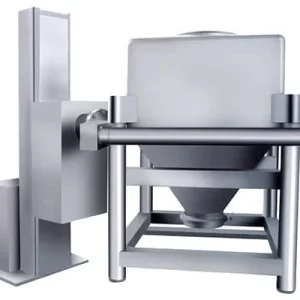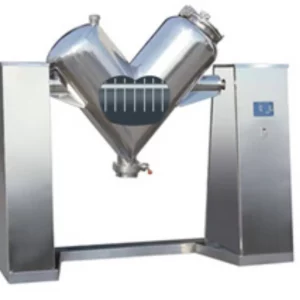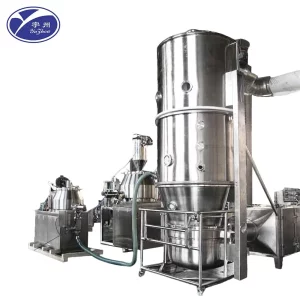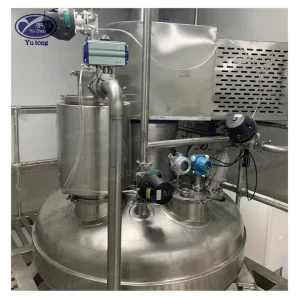In today’s rapidly evolving world, the need for efficient and effective food preservation methods has become paramount. With the growing demand for healthier, more sustainable, and longer-lasting food options, the food industry is continuously exploring innovative preservation techniques. Vacuum drying, a method that is gaining significant attention and traction, plays a crucial role in this landscape. But what exactly is vacuum drying in food preservation, and how does it work to enhance food storage? Let’s delve into this fascinating technique in detail, exploring its scientific basis, benefits, applications, and even how you can implement it at home.
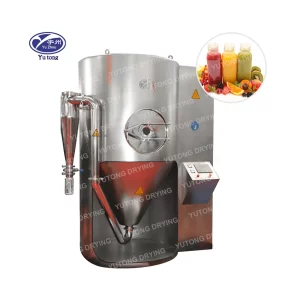
What is Vacuum Drying in Food Preservation?
Vacuum drying is a cutting-edge food preservation technique that involves removing moisture from food under significantly reduced atmospheric pressure. This method is particularly noteworthy because it allows for drying at much lower temperatures compared to traditional air drying. The lower temperatures are crucial in retaining the nutritional content, color, and flavor of the food, offering an edge over conventional drying methods.
Understanding Atmospheric Pressure and Its Role
Atmospheric pressure plays a critical role in the boiling point of water. Under normal conditions, water boils at 100°C (212°F). However, when pressure is reduced, the boiling point of water decreases significantly. In a vacuum drying chamber, the pressure is lowered drastically, allowing moisture in the food to evaporate at much lower temperatures. This gentle drying process helps preserve the integrity of the food’s structure and its essential nutrients.
The Science Behind Vacuum Drying
The process of vacuum drying is rooted in fundamental principles of physics. By reducing the pressure inside the drying chamber, the boiling point of water is lowered, allowing for moisture to evaporate at temperatures that are much gentler on the food. This is crucial because it minimizes thermal degradation of sensitive nutrients and compounds. The reduced pressure environment also prevents oxidative reactions, which can spoil food during conventional drying processes.
Benefits of Lower Temperature Drying
Drying food at lower temperatures has several advantages. It prevents the breakdown of heat-sensitive vitamins and antioxidants, which are often lost during high-temperature drying. The reduced thermal impact also helps maintain the natural structure and texture of the food, making vacuum-dried products more appealing to consumers who seek quality and authenticity in their food choices.
Benefits of Vacuum Drying for Food Preservation
Vacuum drying offers a multitude of benefits over conventional drying techniques, making it an attractive option for both industrial and home food preservation. Its ability to retain the nutritional value, flavor, and color of food, along with its extended shelf life and energy efficiency, sets it apart. Here are some of the key advantages:
Enhanced Nutrient Retention
One of the most significant benefits of vacuum drying is its ability to retain the nutritional value of food. Because the process occurs at lower temperatures, the vitamins, minerals, and other nutrients in the food are better preserved. High heat can degrade these essential components, but vacuum drying minimizes nutrient loss, making the food healthier and more nutritious for consumers.
Improved Flavor and Color
Traditional drying methods often result in a loss of flavor and color due to prolonged exposure to heat. Vacuum drying, on the other hand, helps maintain the original taste and appearance of the food. This is particularly important for fruits, vegetables, and herbs, where flavor and color are key indicators of quality and freshness. Consumers are more likely to choose products that look and taste as close to fresh as possible, a promise that vacuum drying fulfills.
Extended Shelf Life
By efficiently removing moisture, vacuum drying significantly reduces the risk of microbial growth, which can spoil food. This method extends the shelf life of food products, making them suitable for long-term storage. Consumers and businesses alike benefit from reduced food waste and increased product longevity, which is crucial in today’s market, where sustainability and resource conservation are highly valued.
Energy Efficiency
Vacuum drying is an energy-efficient process, which is a major advantage in an era where energy conservation is a global priority. Because it operates at lower temperatures, it consumes less energy compared to conventional drying methods. This not only reduces operational costs for businesses but also makes it an environmentally friendly option, aligning with the growing consumer preference for sustainable practices.
Versatility Across Food Types
The adaptability of vacuum drying across various food types is another benefit worth highlighting. Whether it’s delicate herbs, robust meats, or juicy fruits, vacuum drying can be customized to suit the specific requirements of each food type. This versatility broadens the scope of applications for vacuum drying, making it a go-to method for diverse food preservation needs.
Applications of Vacuum Drying in the Food Industry
Vacuum drying is a versatile technique with numerous applications across the food industry. It is not only used for extending the shelf life of products but also for enhancing the quality and appeal of various food items. Here are some notable examples:
Fruit and Vegetable Preservation
Fruits and vegetables are often vacuum-dried to make snacks or ingredients for various products. The process retains its natural sweetness and nutrients, making it a popular choice for health-conscious consumers. Vacuum-dried fruits and vegetables maintain their vibrant colors and flavors, appealing to those who seek natural and minimally processed food options. This method also provides a way to enjoy seasonal produce all year round without compromising on quality.
Herb and Spice Drying
Herbs and spices benefit greatly from vacuum drying as they preserve their essential oils and vibrant colors. This method ensures that they remain potent and flavorful when used in cooking. The preservation of essential oils is particularly important as it is the source of the herb’s aroma and flavor. Vacuum drying helps in maintaining these qualities, ensuring that culinary creations are as aromatic and flavorful as intended.
Instant Food and Powders
Many instant food products, such as soups and powdered beverages, are vacuum-dried to ensure quick rehydration and ease of use. The process helps maintain the product’s quality and taste, making it convenient for consumers who value both taste and convenience. Vacuum drying ensures that these products dissolve easily in water, providing a seamless cooking experience.
Meat and Seafood Preservation
Vacuum drying is also used for preserving meat and seafood. The method ensures that the texture and taste remain intact, making it ideal for producing high-quality jerky and dried seafood. This is particularly beneficial for consumers who appreciate the convenience of ready-to-eat meat and seafood products without compromising on taste and texture.
Dairy and Egg Products
Vacuum drying can also be applied to dairy and egg products, transforming them into powders that are easy to store and use. Milk powder, cheese powder, and egg powder are all examples of vacuum-dried products that maintain their nutritional content and flavor. This application is particularly useful for industries that require stable and long-lasting ingredients for various food formulations.
How to Vacuum Dry Food at Home
While vacuum drying is commonly used in industrial settings, it is possible to vacuum dry food at home with the right equipment and a bit of know-how. Here’s a detailed guide to help you get started:
Equipment Needed
To successfully vacuum dry food at home, you will need specific equipment. A vacuum drying machine or a vacuum chamber is essential for creating the low-pressure environment required for the process. Additionally, a vacuum pump is necessary to reduce the pressure within the chamber. Finally, a vacuum sealer will be needed to package the food once it is dried, ensuring it remains fresh for extended periods.
Steps to Vacuum Dry Food
- Preparation: Begin by cleaning and cutting the food into uniform pieces to ensure even drying. Consistency in size helps in achieving uniform moisture removal across all pieces.
- Pre-treating: For fruits and vegetables, consider blanching them to preserve their color and nutrients. Blanching involves briefly boiling the food and then plunging it into ice water, which can help retain vibrant colors and important nutrients.
- Loading: Place the prepared food in the vacuum chamber. Arrange the pieces in a single layer to allow even exposure to the low-pressure environment.
- Vacuuming: Seal the chamber and use the vacuum pump to reduce the pressure. This step is crucial as it sets the stage for moisture evaporation at lower temperatures.
- Drying: Monitor the drying process closely and adjust the temperature and pressure as needed. Depending on the type of food and the desired outcome, drying times and conditions may vary.
- Sealing: Once the food is thoroughly dried, use a vacuum sealer to package it for storage. Proper sealing is essential to prevent moisture reabsorption and to maintain the quality of the dried food.
Tips for Successful Home Vacuum Drying
Achieving the best results with home vacuum drying requires attention to detail. Ensure that your equipment is well-maintained and functioning correctly. Experiment with different drying times and temperatures to find the optimal settings for each type of food. Keep detailed records of your processes and outcomes to refine your technique over time.
Conclusion
Vacuum drying is a remarkable technique that enhances food preservation by maintaining its nutritional quality, flavor, and appearance. As consumers become increasingly conscious of the food they consume, the demand for vacuum-dried products continues to grow. Whether you’re a food industry professional or a home enthusiast, understanding the benefits of vacuum drying can help you make informed decisions about food preservation.
By exploring and embracing such innovative preservation methods, we can enjoy healthier food options while minimizing waste and conserving resources. As the world moves towards more sustainable practices, vacuum drying offers a viable solution for both commercial and personal food preservation needs. Embracing this technology not only benefits our health and palate but also contributes to a more sustainable and efficient food system.

